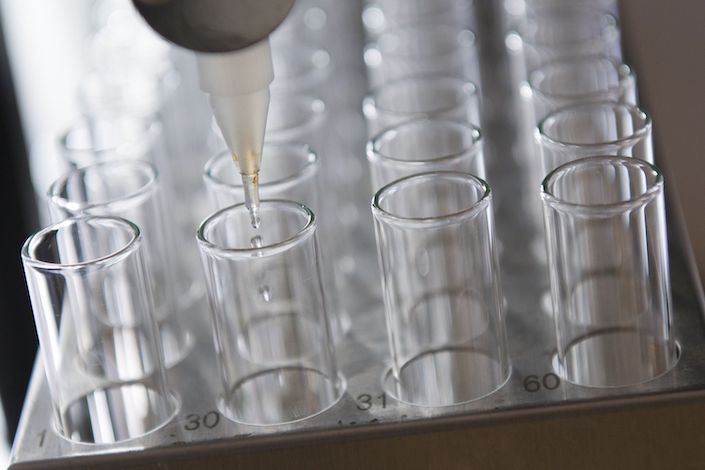China Applies Stricter Criteria for Diagnosing Covid-19 Cases

 |
The sixth national treatment and diagnostic plan for the deadly coronavirus issued Wednesday by the National Health Commission reverses a change in the fifth edition released last week. Under that plan, cases in the epidemic’s epicenter Hubei could be diagnosed clinically, such as via chest X-rays. Now all confirmed cases must be determined using laboratory tests known as nucleic acid tests (NATs).
The new, stricter diagnosing criteria are likely to result in further declines in the rate of reported new cases. The previous change that allowed chest X-rays to be used for diagnosis alongside standard lab tests resulted in a one-day jump in Hubei of nearly 15,000 new confirmed cases on Feb. 13. About 90% of them came from a clinical diagnosis.
As of the end of Tuesday, there were 74,279 confirmed cases of Covid-19 in China and 5,248 suspected cases, according to data from the National Health Commission.
Previously doctors raised concerns about false negatives from laboratory testing that sometimes failed to diagnose infected people. The new guidelines stress the accuracy of the lab test.
To address concerns about false negatives, the new guidelines emphasize the use of sound sampling procedures to safeguard the accuracy of the findings and suggest using multiple NATs alongside a new, rapid antibody screening test kit developed by Guangzhou Medical University under the guidance of Zhong Nanshan, a respiratory expert who discovered the SARS coronavirus in 2003.
The new test kit can detect an immunoglobulin produced only after a human body has contact with the Covid-19 virus, Zhong said Tuesday at a press conference in Guangdong. The use of the antibody screening test can be mutually verified with the NAT results and can help to identify suspected cases while increasing diagnostic accuracy, Zhong said.
Read More
Experts Move to Calm Fears of Inaccurate Diagnostic Tests
Even With Massive Funding, Coronavirus Vaccine Isn’t Coming Soon
The new test kit needs only one drop of blood and can produce results onsite within 15 minutes, according to a developer of the test kits. But experts said NATs are still considered the “gold standard,” while the sensitivity of the antibody test needs further clinical verification.
It takes time for the human body to produce antibodies, which are closely related to a patient’s own immune system. Consequently, antibody testing can fail to detect infected people, said Yao Tiancheng, chairman of Shenzhen Tisenc Medical Devices Co., one of the developers of the new test kits. The antibody testing and NATs cannot replace each other, he said.
To lower the risks of missing any infected person, the new guidelines also tighten the criteria for lifting quarantine for recovered patients. Under previous guidelines, people with two negative NATs tests could be released from quarantine. Now, in addition to that requirement, patients must resume normal temperature readings for at least three days and show significant improvement of respiratory symptoms and pulmonary imaging before their quarantine can be removed.
The health authority previously said there is no proven effective treatment for the coronavirus. The new guidelines remove that statement and add the antiviral drugs chloroquine phosphate and Arbidol to the treatment plan. But it is not recommended to use more than three antiviral drugs at the same time.
Chloroquine phosphate, a drug usually used to treat malaria, has been evaluated in hospitals and proven effective in treatment of the coronavirus, said Sun Yanrong, deputy head of the China National Center for Biotechnology Development under the Ministry of Science and Technology, at a press conference Monday.
The guidelines recommend the use of blood plasma from recovered people on patients in severe and critical condition. However, due to a limited plasma supply, it is difficult to apply on a large scale.
The new guidelines also for the first time raise the possibility of transmission through aerosol — tiny particle droplets suspended in the air ― in closed environments for extended periods of time.
Huang Shulun contributed to this report.
Contact reporter Denise Jia (huijuanjia@caixin.com) and editor Bob Simison (bobsimison@caixin.com)

- MOST POPULAR






